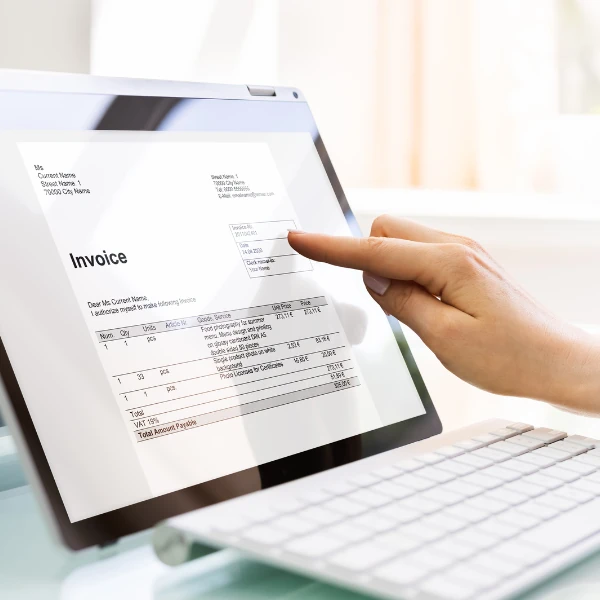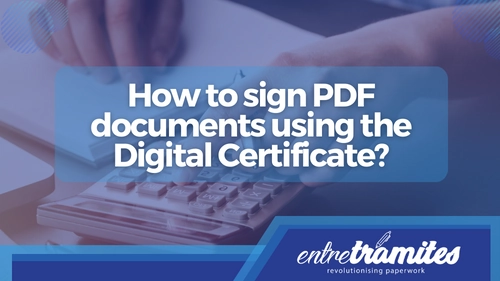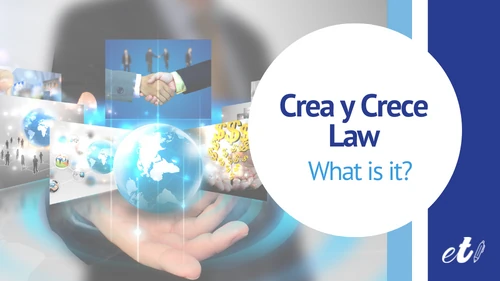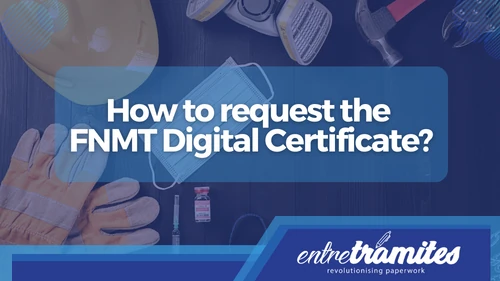Entre Trámites » Taxes in Spain » Electronic Invoicing in Spain
DEFINITIVE GUIDE TO ELECTRONIC INVOICING IN SPAIN
Automate Your Invoicing
Invoicing in Spain is changing. The ‘Crea y Crece’ Law and the Anti-Fraud Law mark the beginning of a new digital era.


What exactly is an electronic invoice?
An electronic invoice is a structured digital document, generally in an XML format like Facturae, that is transmitted from one computer system to another in an automated way. Unlike a paper invoice, the electronic invoice guarantees two key elements:
✅Authenticity of origin: It ensures who issued the invoice.
✅ Integrity of content: It confirms that the invoice has not been altered since its creation.
This is achieved through the use of an advanced electronic signature. The objective is to improve fiscal traceability and streamline administrative processes.
Laws and Deadlines
Law 11/2021 (Anti-Fraud Law): The “How” of Software.
This law does not require the use of electronic invoicing, but rather requires invoicing software to meet certain requirements to ensure the integrity and unalterability of records (known as “VeriFactu” software).
July 29, 2025: Deadline for invoicing software manufacturers and developers to offer products adapted to this law.
January 1, 2026: Obligation for companies filing corporate income tax to use software that meets these requirements.
July 1, 2026: Obligation for all other self-employed individuals and taxpayers.
Law 18/2022 (Crea y Crece): The “When” of the B2B Obligation
This is the law that makes it mandatory to issue and receive electronic invoices for all commercial transactions between companies and self-employed individuals. The deadlines depend on your business’s turnover:
End of 2024: Mandatory for companies with an annual turnover of more than €8 million.
Beginning of 2026: Mandatory for companies, SMEs, and self-employed individuals with an annual turnover of less than €8 million.
End of 2026: Self-employed individuals (individuals) will have the additional obligation to report the status of the invoices they receive (e.g., accepted, paid).

What is the VeriFactu System?
The Verifactu system is a set of technical requirements imposed by the Spanish Tax Agency on all invoicing software. Its main objective is to combat tax fraud by ensuring that each invoice issued is securely recorded and cannot be erased or altered without leaving a trace.
For software to be compatible with Verifactu, it must meet three key technical requirements: generate an unalterable record for each invoice (often with a “fingerprint” or hash), include a QR code for immediate invoice verification, and ensure the traceability of all records so they cannot be tampered with.
How to issue an electronic invoice that complies with the regulations?
For an electronic invoice to be valid, it must meet several legal and technical requirements
- Mandatory Content: It must include all the data required by the Invoicing Regulations, such as number, date, description, breakdown of taxes, etc.
- Structured Format: It must be generated in a recognized and standard format in Spain, especially for public administrations, such as Facturae (XML).
- Advanced Electronic Signature: The invoice must be digitally signed with a recognized electronic certificate to guarantee its authenticity and integrity.
- Adequate Software: It is necessary to use invoicing software capable of generating these files in the correct format and applying the signature.
Get advice from our experts!
Our free consultation service on various tax and accounting issues in Spain guarantees you expert advice tailored to your specific needs.
FAQs
General Info
What is the main difference between the Anti-Fraud Law and the "Crea y crece" Law?
The Anti-Fraud Law focuses on the technical requirements for invoicing software to ensure its security. The “Crea y Crece” Law focuses on the obligation to use electronic invoicing in business-to-business transactions. They are complementary.
If I send my invoices as a digitally signed PDF by email, am I complying with the new law?
No, and this is the fundamental difference introduced by the new law.
The reason is the difference between a visual document (designed to be read by a person) and a data file (designed to be processed by a computer).
A signed PDF is like a digital photo of an invoice. The signature guarantees who issued it and that it hasn’t been altered, but your client’s system can’t “read” or automatically account for the data it contains.
An electronic invoice, according to the new law (in Facturae format), is a structured data file. This allows your client’s software to process, understand, and account for it 100% automatically, without errors or manual work.
How to send an electronic invoice to the Public Administration?
Invoices addressed to public entities must be sent through FACe (General Entry Point for Electronic Invoices), following these steps:
- Create the invoice in Facturae (XML) format.
- Digitally sign it with a valid certificate.
- Upload it to the FACe platform or to each entity’s specific system.
- Track the invoice’s status on the platform.
What happens if I don't fulfill the obligation when the due date arrives?
Failure to comply with invoicing regulations can result in fines of up to 10,000 euros, according to law.
Will I need special software for all this?
Yes. You’ll need invoicing software that meets both the requirements of the Anti-Fraud Law and the ability to generate and manage electronic invoices in the formats required by the “Crea y Crece” Law.
Our Team
How do I contact my specialist?
You’ll always receive personalized attention and direct contact with your specialist.
You can contact us at any time (during business hours and regarding the services you’ve requested) by email or phone, whichever is most convenient for you.
Is there another way to contact Entre Trámites?
Do you need more information? We want to hear from you and learn about your questions or needs regarding restaurant accounting services. Rely on the advice of our experts to answer any questions you may have.
Write to us at [email protected] and we will get back to you as soon as possible, or if you prefer, give us a Call.





